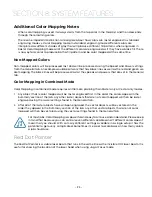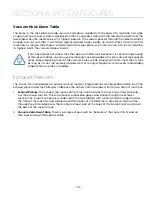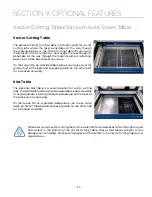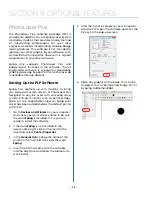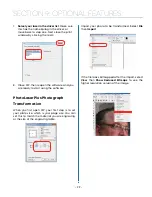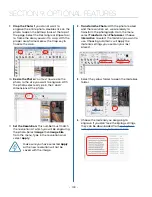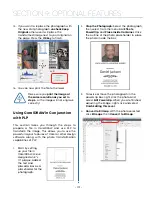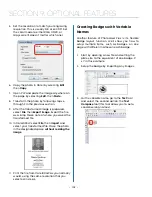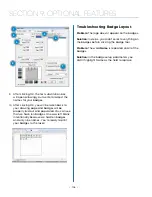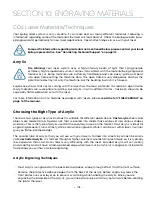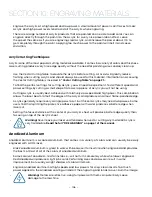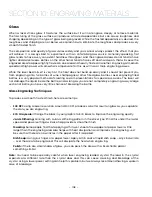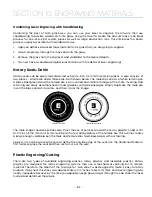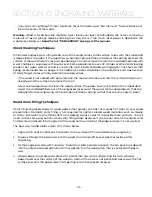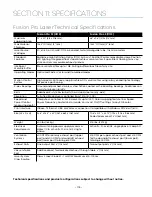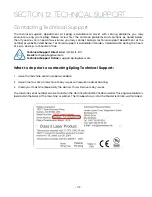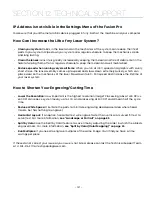
• Engrave the acrylic at a high speed and low power. A small amount of power is all it takes to mark
acrylic and high power levels tend to distort the acrylic when engraving.
• There are a large number of acrylic products that are painted on one side to add color. You can
engrave directly through the paint into the acrylic for a very nice presentation effect. Leave
the speed the same as if you are engraving clear acrylic, and increase the power about 10% to
get completely through the paint. Applying too much power to the paint will melt it and cause
distortion.
Acrylic Cutting Techniques
Acrylic is one of the most popular cutting materials available. It comes in a variety of colors and thickness.
Laser cutting produces very nice edge quality without the need for polishing or secondary clean up.
• Use the Vector Cutting Table to elevate the acrylic before cutting. Air Assist will greatly reduce
flaming when cutting acrylic and should always be used for this material. Information on accessing
the Vector Cutting Table is included in
“Vector Cutting Table” on page 97.
• To find the perfect settings for cutting acrylic, you will need to experiment. Test different speed and
power settings by cutting a small shape from a scrap piece of acrylic you will not be using.
• Cutting acrylic is usually best achieved with relatively slow speed and high power. This combination
allows the laser beam to melt the edges of the acrylic and produce an almost flame-polished edge.
• Acrylics generally require only a single pass to cut, but thicker acrylics may need two passes. Some
users find that spritzing the protective adhesive paper with water produces a better edge when
laser cut.
• Setting the focus distance at the center of your acrylic sheet will produce better edge quality than
focusing on top of the acrylic sheet.
•
Warning!
Never leave your laser unattended when vector cutting any material! Acrylic is
very flammable.
Read the full “FIRE WARNING” on page 1 of the manual.
Anodized Aluminum
Anodized aluminum is a coated aluminum that comes in a variety of colors and can usually be easily
engraved with a CO2 laser.
• Black anodized aluminum is great to work with because it turns white when engraved and provides
the best contrast of all of the colors of anodized aluminum.
• Some colors of anodized – red for instance – will not turn completely white when laser engraved.
Red anodized will produce a light pink color. Performing a second pass can result in some
improvement, but usually a slight shadow of color will remain.
• Engrave anodized aluminum at high speeds and low powers for crisp, clean results. Too much
power applied to the anodized coating will distort the engraving and tends to over-burn the image.
•
Warning!
Metals are reflective. Using full power with them can potentially cause
damage to the machine.
- 106 -
SECTION 10: ENGRAVING MATERIALS


